by Mike Gulett –
A friend of mine, Clay McQuire, recently suggested that I profile the Ford Thunderbird (and so here we are). She is interested because she grew up with a 1955 Thunderbird in the family (a black one) and has always had fond memories of that car. One of my uncles had a red ’57 T-Bird and my parents had a red ’70 T-Bird at one time. I did get to drive that one occasionally and loved it. I realize the ’70 version is quite different that the ’55 or ’57 models and that is part of the story of the evolution of the Ford Thunderbird.
In going over the history of this great American car I have always wondered why Ford moved away from the Thunderbird two seat sports luxury car and from competing in the market place with the Chevrolet Corvette. All of these decades later the Corvette is America’s top sports car while the Thunderbird is out of production and has quite a different legacy.
The Ford Thunderbird is an important American car, embodying over five decades of evolving tastes in design and performance. First introduced in 1955, the Thunderbird, or “T-Bird”, was Ford’s answer to the growing popularity of sporty, personal luxury cars. Its journey through the decades tells a broader story about American automotive history.
Birth of the Thunderbird (1955–1957)
The idea for the Thunderbird was born in the early 1950s, inspired in part by Chevrolet’s launch of the Corvette in 1953. Ford wanted to create a car that offered sporty style but with more luxury and comfort—a “personal car of distinction” rather than a pure sports car.
Debuting at the 1954 Detroit Auto Show and going on sale in 1955, the first Thunderbird was a beautiful two-seater convertible powered by a V8 engine. It was not marketed as a sports car, but rather a “personal luxury car,” emphasizing comfort and styling over raw performance. It was a hit—outselling the Corvette five to one in its first year.
The first-generation Thunderbird (1955–1957) is now considered a classic, known for its clean lines, porthole windows (added in 1956), and tailfins that previewed late-’50s styling trends.
These three model years are collectively referred to as the “Baby Birds” by some car lovers. Their cultural and historical importance includes:
Aesthetic Design: Elegant, restrained mid-1950s styling with hints of jet-age flair.
Cultural Icon: Driven by celebrities like Frank Sinatra and featured in songs and films, the Thunderbird became a postwar status symbol.
Collector Value: Especially the 1957 models (and the rare supercharged versions), these cars remain highly valued in the classic car market. Condition, originality, and provenance strongly affect pricing.
Segment Creation: The Thunderbird defined the “personal luxury car” segment, influencing decades of design trends.
Square Bird (1958–1960)
In 1958, Ford dramatically changed the Thunderbird. The second generation grew into a four-seater with a fixed roof option, a clear move away from the sporty roadster. While some car lovers were disappointed, sales soared—doubling the previous model’s numbers. This “Square Bird” ushered in the idea of the personal luxury car segment for real.
It was during this period that the Thunderbird began to establish a unique identity, distinct from sports cars or luxury sedans—a category in which it would later be joined by the Buick Riviera and Pontiac Grand Prix.
Jet Age (1961–1966)
The third generation (1961–1963), known for its rocket-inspired styling, included innovations like a swing-away steering wheel and advanced options such as cruise control and power windows. President John F. Kennedy even used a modified Thunderbird for his inaugural parade, cementing its image as a car of prestige and forward-thinking design.
The fourth generation (1964–1966) continued the trend of space-age elegance and was often seen as a prestige vehicle for upwardly mobile Americans. These models grew in size and weight, placing even more emphasis on luxury over performance.
Personal Luxury (1967–1979)
By the late 1960s and throughout the 1970s, the Thunderbird fully embraced its role as a personal luxury car. The fifth-generation (1967–1971) brought in larger bodies, more chrome, and the option of four doors.
The sixth generation (1972–1976) was the largest Thunderbird ever produced—based on the Lincoln Continental platform—and reflected the American appetite for big, comfortable cruisers. By the time the seventh generation arrived in 1977, the oil crisis had changed buyer priorities. Ford responded by shrinking the Thunderbird and placing it on a mid-size platform shared with the Ford Torino and Mercury Cougar.
Despite size reductions, the Thunderbird remained an important symbol of style and success throughout the decade.
Downsizing and Aerodynamic Design (1980–1997)
In the 1980s, the Thunderbird continued its downward move in size, performance, and sales. The ninth generation (1983–1988) adopted a more aerodynamic, “aero-bird” look that reflected changing styling sensibilities and improved fuel economy.
In 1989, the tenth generation attempted to restore performance credibility with an independent rear suspension and the introduction of the Super Coupe, which featured a supercharged V6 engine. Though critically praised, it never fully recaptured the glory of earlier T-Birds.
Return and Exit Again (2002–2005)
After a hiatus, Ford revived the Thunderbird name in 2002 as a modern two-seat convertible, drawing direct inspiration from the original 1955 model. It shared its platform with the Lincoln LS and Jaguar S-Type and featured retro styling cues such as round headlights and egg-crate grilles.
Though warmly received at launch and winning Motor Trend’s Car of the Year in 2002, sales declined quickly. By 2005, the Thunderbird was discontinued once more, ending its long and storied run. At least for now.
Legacy
The Ford Thunderbird is an important car in American car history. Over the course of 11 generations and nearly 50 years of production, the T-Bird morphed from a nimble two-seat roadster to a land yacht to a retro revival cruiser.
The Thunderbird legacy includes:
Helping define the “personal luxury car” segment.
Reflecting major changes in American automotive design from the 1950s to the 2000s.
Being immortalized in songs, movies, and TV shows (notably in the movie, “American Graffiti” (remember Suzanne Summers driving that white T-Bird?) and songs like “Fun, Fun, Fun” by The Beach Boys).
Though the Thunderbird is no longer in production, it holds a special place in Ford’s heritage and in the hearts of car lovers around the world.
Let us know what you think in the Comments.
More images are in the slide show below.
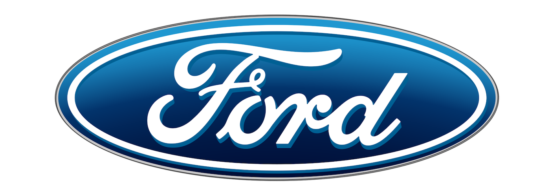
Research and some text by ChatGPT 40. Images compliments of Ford and many were found at this site.
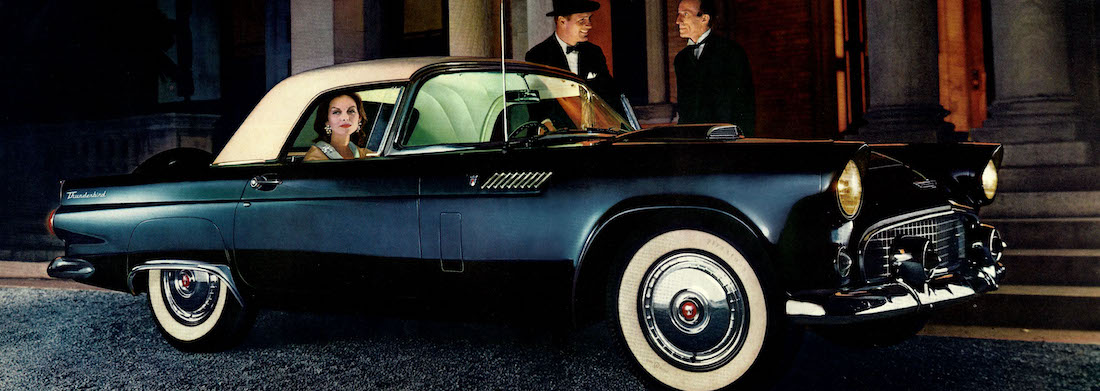


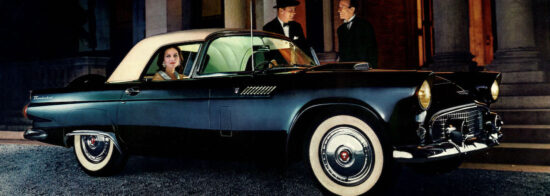
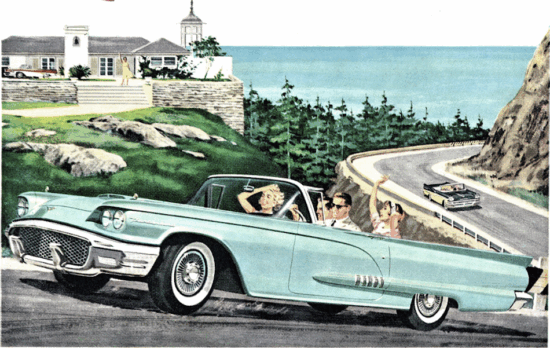
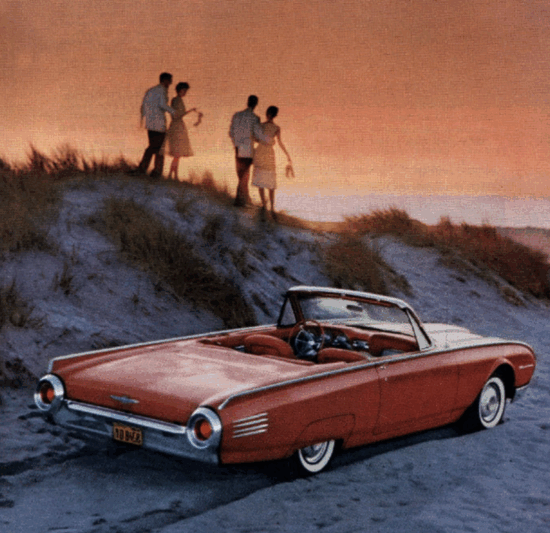
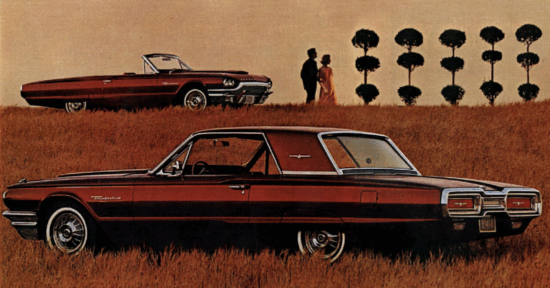
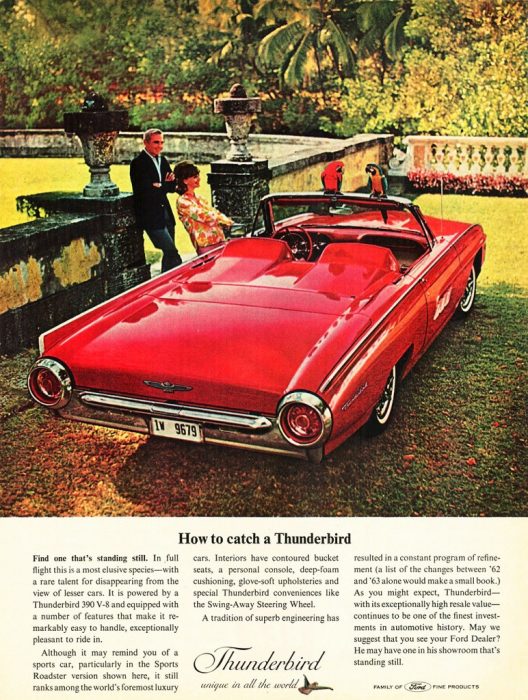
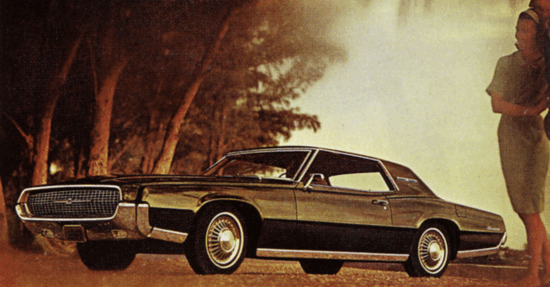
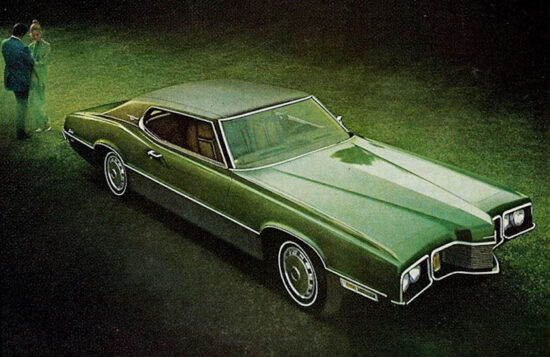
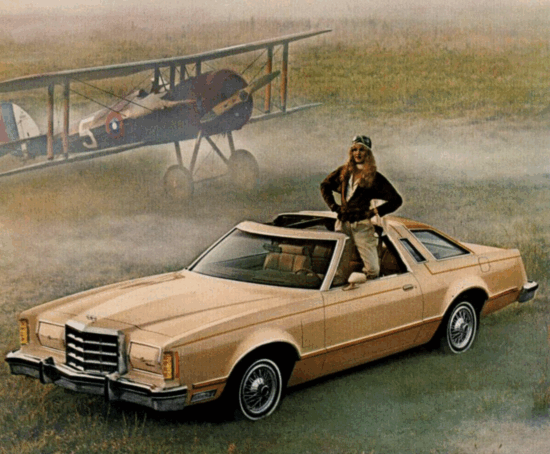
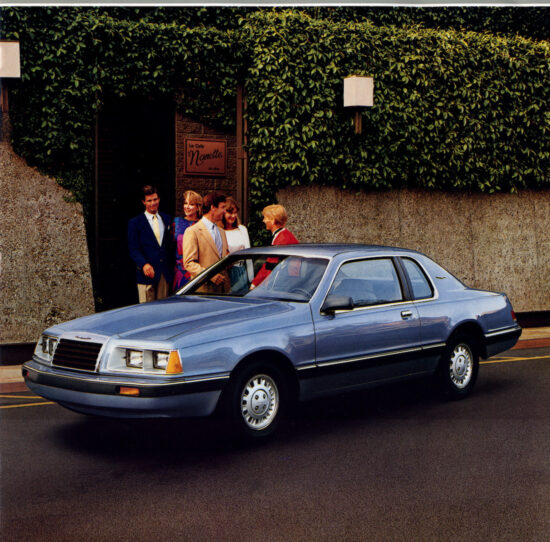
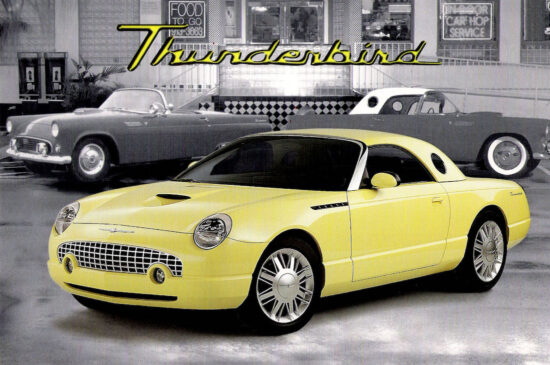





















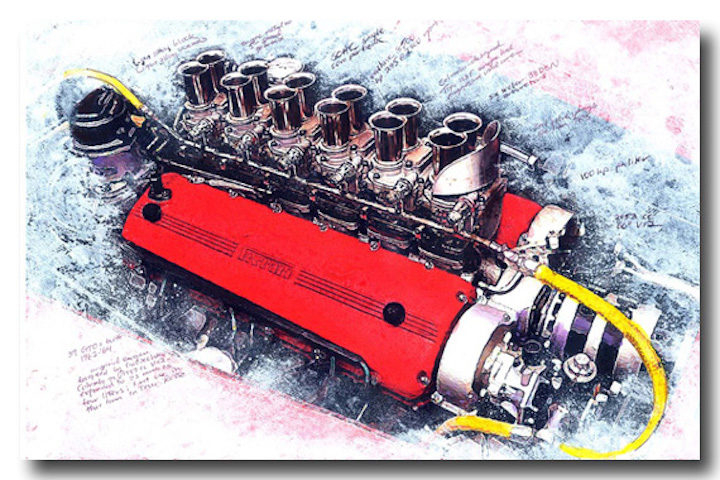

the 1999 bird look like a Qval detomaso mangusta.- bigua
same desiner (? Gandini?)
I always loved the Baby Birds, and considered the ’55 to be the best. I had the lower model with 3spd OD trans, and windup windows. It got rubber in every gear, but was like a truck in handling. But the car made lots of sense when compared to the Corvette; the ‘bird had a trunk! ’56 saw the introduction of sun visors, and wing windows; something I wish I had on the ’55. My ’55 had the spare tire in the trunk, so no unsightly continental kit hanging out the back, further worsening the handling.
The Square Birds, and on should have been marketed as Mercury, leaving the refined 2 seater as a luxury sports model for Ford.
In my opinion, just like the 810 & 812 Cords, the Baby Birds have been stagnant in values; a shame.
I remember seeing my first “baby bird” in the flesh when we moved to Connecticut from Upstate NY when I was 13 in 1970. While not a new car then, I loved it and thought it was beautiful. It was pale yellow with fender skirts and a hard top with porthole windows. I remember it like it was yesterday. My first car was a 1966 TBird that I bought from the original owners who towed their motor boat from the SF Bay Area to Lake Tahoe. It was a beautiful car, red over black, with fender skirts, the fancier wheel covers and a 428 engine that was needed to get the first owner’s boat up to the Sierras. I loved it and had it sophomore year of college and sold it after a year. Bought it for $650 and sold it for $750, and one of the few times I actually made money on a car! I’ve always admired the TBirds and still do to this day.
I believe the very earliest Thunderbirds qualify for the Mille Miglia–a rally I have done 3 times Lennoxwhister@gmail.com
Mike,
Yes, the ’77 Thunderbirds were somewhat downsized to the Torino-Cougar-LTD II platform from the Continental Mark IV luxury platform. However, by Ford heavily “decontenting” the T-Bird for 1977, the price dropped by thousands of dollars, and sales increased by hundreds of thousands:
“In 1977, Ford sold 318,140 Thunderbirds, a dramatic increase from the 53,000 units sold in 1976. This jump in sales was largely due to the introduction of a downsized, more affordable Thunderbird in 1977, which appealed to a wider market.”
As for the 2002 through 2005 “retrobird”, although its styling and performance were incredibly impressive that $40,000 price point was its fatal flaw. $40,000 was a lot of money during that period. You could purchase an entry level Corvette for that money, or choose between a myriad of other personal luxury cars for a lot less money. People could not justify spending that amount of money for that car. Personally, I love the styling of the car, and in Manhattan where I work, I usually spot some during the summer with their hardtops removed and convertible tops down. I always approach the owners, and they truly love their retrobirds.
Glenn in Brooklyn, NY.
The failure to continue the Sports Roadster tonneau (covering rear seats) in the change from ’63 to the re-styled ’64 was a real shame because the ’64 had flatter lines that matched that cover. I never read yet who designed that tonneau and what his inspiration was…as most of the “headrest blisters” (for lack of a better word) were rounded as on Mercedes 300SLR. Thru Ford some dealers sold a modified plastic tonneau for the ’65 but that was not designed by Ford in Dearborn.